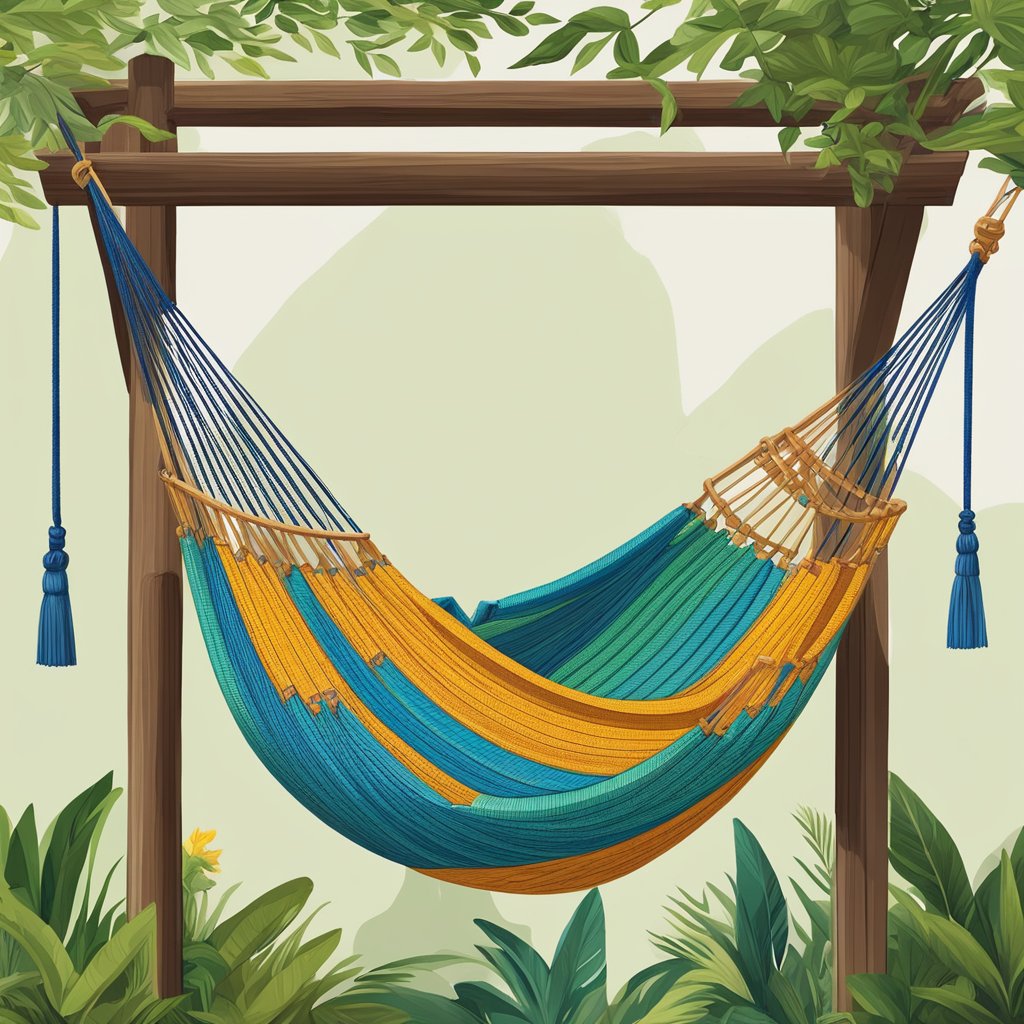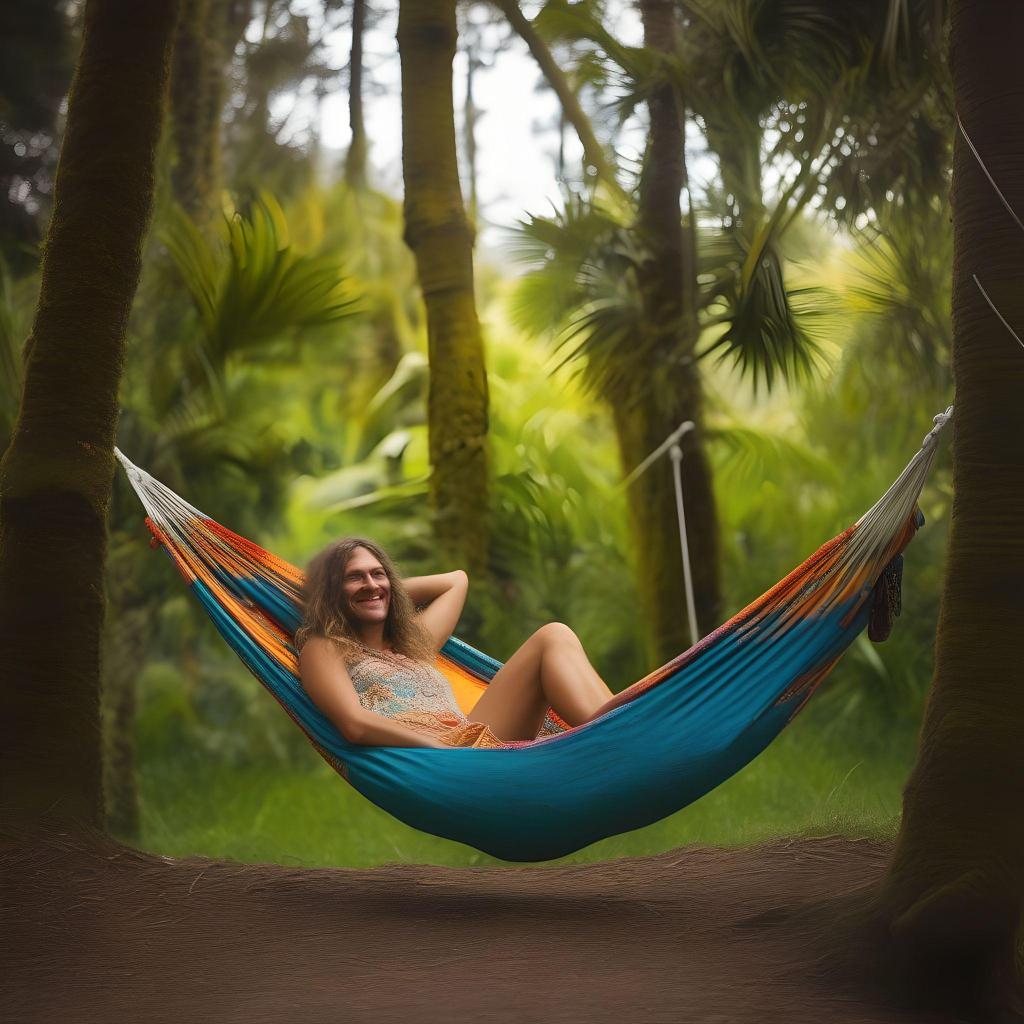Vietnamese hammocks have been a staple of Vietnamese culture for centuries. They are a traditional craft that has been passed down through generations, and are still used widely today. The hammocks are made from a variety of materials such as cotton, silk, and nylon, and come in a range of colours and patterns.

The Vietnamese hammock is an important part of the country’s cultural values. It is a symbol of relaxation and leisure, and is often used for afternoon naps or as a place to rest during hot summer days. The hammocks are also used for sleeping, and are a popular choice for outdoor camping trips.
The Vietnamese government recognises the importance of traditional crafts such as the hammock, and has established a Culture Department and People’s Committee to preserve and promote these cultural values. The hammock is just one example of the rich cultural heritage of Vietnam, and is a testament to the skill and craftsmanship of its people.
History and Tradition

Evolution of Vietnamese Hammocks
Vietnamese hammocks have a long history that dates back to the 14th century. They were initially made from bark and leaves, but over time, the materials used to make them evolved. Today, they are made from cotton or nylon, which makes them more durable and comfortable.
The evolution of Vietnamese hammocks is closely tied to the country’s craft industry. Local women have been weaving traditional hammocks for generations, passing down their skills and techniques to following generations. The craft requires a great deal of patience and attention to detail, which is why it is often passed down from mother to daughter.
Traditional Hammock-Weaving Techniques
The traditional hammock-weaving techniques used by Vietnamese women are still in use today. The process involves weaving the hammock by hand, using a wooden loom. The weaver carefully threads the cotton or nylon through the loom, creating a pattern that is both beautiful and functional.
The hammocks are woven in a variety of patterns and colours, each with its own unique style. The weavers often use preferential policies to source the best materials, ensuring that the hammocks are of the highest quality.
In conclusion, Vietnamese hammocks have a rich history and tradition that is closely tied to the country’s craft industry. The evolution of the hammock has led to the use of more durable and comfortable materials, while the traditional weaving techniques have been passed down through generations of local women. The result is a beautiful and functional product that is both comfortable and stylish.
Materials and Craftsmanship

Natural Fibres and Durability
Vietnamese hammocks are traditionally made from natural fibres such as cotton, bark, and ramie fiber. These materials provide a comfortable and sturdy base for the hammock. The cord or ropes used to hold the hammock together are also made from natural fibres, adding to the durability of the hammock.
Pandanus trees are often used to create the cord for the hammock. The bark of the tree is stripped, soaked, and then spun into a strong cord that can withstand weight and tension. This traditional method of creating cord has been used for generations and is a testament to the craftsmanship of Vietnamese hammock makers.
Innovations in Hammock Materials
While traditional materials are still widely used, there have been innovations in hammock materials in recent years. Synthetic fibres such as nylon and polyester are now being used to create hammocks that are more lightweight and durable. These materials are also resistant to moisture, making them perfect for outdoor use.
Craftsmanship is still an important aspect of Vietnamese hammock making, even with the use of synthetic materials. The same attention to detail and quality is put into every hammock, ensuring that it will provide comfort and durability for years to come.
In conclusion, the materials and craftsmanship of Vietnamese hammocks are a testament to the country’s rich cultural heritage. Whether made from traditional or modern materials, Vietnamese hammocks continue to provide comfort and relaxation to people all over the world.
Design and Features
Structural Elements
Vietnamese hammocks are designed to be lightweight and easy to transport. They are typically made from cotton or nylon material, which makes them durable and resistant to wear and tear. The hammock’s structural elements include a toggle, which is used to secure the hammock to a tree or other support, and grommets, which help to reinforce the edges of the hammock.
The hammock’s design allows it to swing gently, providing a relaxing and comfortable experience for the user. The hammock’s rolling technique is also an important aspect of its design, allowing it to be easily rolled up and stored when not in use.
Functional Additions
Vietnamese hammocks often come with functional additions, such as a poncho that can be used to protect the user from the sun or seawater. The hammock may also have a calf support, which helps to reduce pressure on the legs and feet while lying in the hammock.
The hammock’s design and features make it a versatile and practical choice for outdoor activities. Its lightweight design allows it to be easily transported, while its functional additions provide added comfort and protection from the elements.
Economic and Cultural Impact
Hammocks in the Vietnamese Economy
Vietnam’s hammock industry has seen significant growth in recent years. Hammocks are produced in various parts of the country, with the Mekong Delta being one of the main production areas. The industry has provided job opportunities for many people, especially in rural areas where other job opportunities are limited.
Wholesale markets play a crucial role in the hammock industry, as they are the main distribution channels for hammock manufacturers. Market trends show that there is a growing demand for environmentally friendly products, and many hammock manufacturers have responded by producing eco-friendly hammocks.
Cultural Significance and Tourism
Hammocks have a rich cultural significance in Vietnam. They are a common sight in many households, where they are used for relaxation and as a bed. Hammocks are also associated with the country’s pristine natural beauty and are a popular tourist attraction, especially among young people.
The hammock industry has also contributed to the growth of eco-tourism in Vietnam. Visitors are drawn to the country’s beautiful landscapes and are increasingly interested in environmentally friendly products. Hammocks are a perfect fit for this trend, as they are made from natural materials and have a low environmental impact.
Social networks have also played a role in promoting the Vietnamese hammock industry. Many hammock manufacturers have a strong online presence, which has helped them reach a wider audience both locally and internationally.
In conclusion, the Vietnamese hammock industry has had a significant economic and cultural impact. It has provided job opportunities, contributed to the growth of eco-tourism, and promoted the country’s cultural significance and natural beauty.


Leave a comment